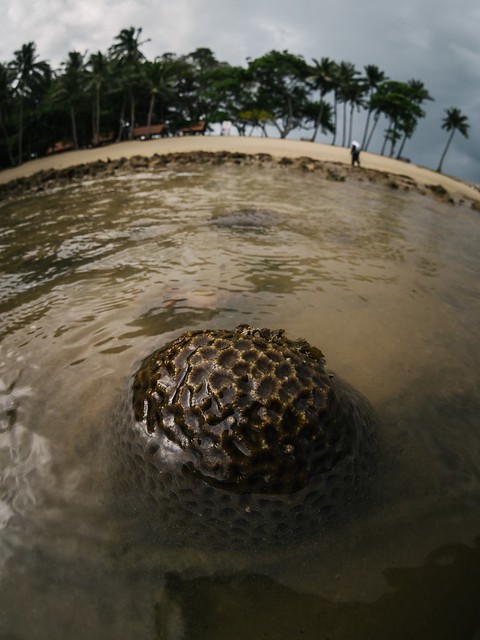Traits of Shapes
 October 14, 2019
October 14, 2019
In a recent blog post, I spoke to Hantu Blog volunteer Gina Tan about some lesser-known insights related to the shapes of coral. Samuel Chan is a PhD candidate at the National University of Singapore’s Reef Ecology Lab. After reading our post about coral shapes, he reached out to us to clarify some of the points we mentioned and shed more light on the fascinating traits of coral shapes! Photos by Nicholas Chew/Toh Chay Hoon/Debby Ng
“a lot of coral scientists prefer to use “branching” and “massive” to describe coral forms, especially when they are talking about reef impacts. “Branching corals” are generally used to refer to corals that are more sensitive to impact, compared to massive corals, which are relatively more resistant to impact.”
Generally, when scientists refer to corals by their forms such “branching” or “massive”, they rely on the morphology or the shape of the corals. This description is generally derived from only the shapes, and while some branching corals may be more sensitive to impacts compared to massive corals, it would be misleading to use “branching corals” to refer to corals that are more sensitive to impact.
“Massive corals have denser skeletons compared to branching corals, so their overall mass is much heavier compared to the lighter branching corals.”
The density of coral skeletons is referred to as a trait, a characteristic that belongs to either individual coral colonies or more generally to coral species. There isn’t really a general guide to skeletal density of different corals, but specifically in Singapore, a study by Lionel Ng and his colleagues from the Reef Ecology Lab has showed that branching corals have higher skeletal densities than other growth forms. This could be due to specific shapes of the corals and how this disperse forces. I think a good example would be like eggshells and how because of their dome shape, they can withstand more force. Mass and density are also different terms, and it would be inaccurate to use them interchangeably.
“massive corals are like big and heavy loads pushing down on the seabed, causing the reef to “sink” compared to the lighter branching corals that are able to stack on top of each other without crushing the colony below since they are much lighter and less dense.”
Corals, like other animals, grow outwards with the skeleton building up successively over time. Thus, they will not cause the reef to sink no matter how heavy they are. The term “drowned reefs” instead refers to reefs that are unable to keep up with sea level rise, as either the reefs are eroded too quickly or when the reefs are unable to accrete in tandem with sea level rise, which means that the reefs are unable to build themselves high enough to match rising sea levels. As this difference in depth between the corals and the sea surface increases, less light travels to the corals within the reefs and they might end up dying.




 Posted in
Posted in 



 content rss
content rss
COMMENTS